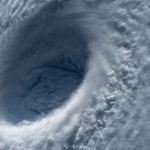The Paradise Coast in Naples, Florida is not only known for its stunning beaches and soft white sands, it’s also home to seabirds both native and migratory. Herons and gulls are a common sight and a crowd favorite amongst wildlife photographers and bird enthusiasts, we know this as much. However, there is a migratory species of birds that have shown up here quite recently, just around September of 2010. These are the color banded semi-palmated plover (SEPL) or if that sounds too technical for you, just ‘plover’ will do.
Plovers are found all through the world, except for the Sahara and the polar regions, and are described by generally short bills. They hunt by locating their prey, as opposed to by feel as longer-billed waders like snipes do. They subsist essentially on creepy crawlies, worms or different spineless creatures, contingent upon their immediate natural surroundings, which are acquired by a run-and-delay method, as opposed to the consistent probing of some other wader gatherings. You can generally see them hanging about the sea shore plucking worms out of holes in Marco Island and Sand Dollar Island.
There are over 20 species of plovers all over the world and the ones that migrate in southwestern Florida show up typically around 15th of April and 15th of December. These birds have a direct migration path from the very northwest tip of Canada down to the southern tip of Florida. They are about 7 inches long and weigh around 2 ounces with the longest recorded lifespan to be 9 years.
These and many other birds like terns and pelicans are being banded to be studied and monitored by environmental scientists. Different scientific organizations from all over the world who take an interest in migratory birds even maintain a line of communication between them just so they could check how their marked bird is doing. For instance an environmental scientist from Florida can give somebody a call from the Arctic just to see how things are going in terms of the migration path and the individual birds themselves.
The plover has a distraction display subcategorized as false brooding. Cases include: putting on a show to change position or to sit on a nonexistent nest site. Distraction displays are anti-predatorial practices used to draw in the attention of a foe far from something, commonly the nest or the younglings, which is being secured by a parent. These Diversion shows are in some cases arranged all the more blandly under “nest protection behaviors” alongside forceful shows, for example, mobbing. These showcases have been examined most widely in bird species.
If you wish to see more of these birds and capture them on camera, visit the Divine Naples website first to get information on the possible places these lovely birds may turn up and then book a ticket or plan your next road trip vacation in the Paradise Coast Naples, Florida and you may just be surprised to be indulged by more than simply the bird attractions but the other things as well like the good food and the overall vibe of the place.










